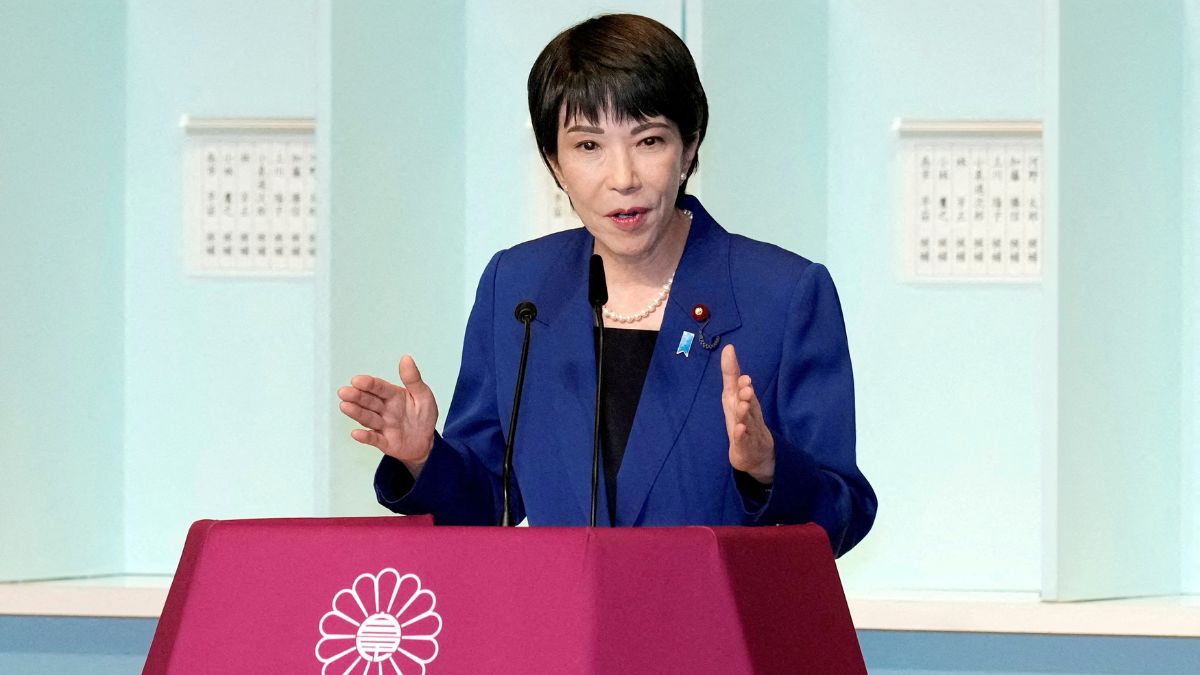When Sanae Takaichi walked into the Kantei as Japan’s first woman prime minister, it wasn’t simply a shattering of a political glass ceiling. It was a seismic wave felt all across Asia. For India, which has invested two decades in a carefully nurtured, “special strategic and global partnership” with Tokyo, Takaichi’s elevation matters symbolically as well as substantively.
Takaichi, 64, has spent decades in the Liberal Democratic Party (LDP), which has long been Japan’s ruling party. Her first entry into Parliament was in 1993, and she grew to become one of the LDP’s most recognisable and prolific conservative voices. She has served as Minister for Internal Affairs and Communications as well as Minister of Economic Security. In the latter role, she pushed for semiconductor resilience and to screen foreign investment when it came to sensitive technology.
Ideologically, she is a staunch nationalist. Pro-constitutional revision, considered “hawkish” on China and North Korea, and a keen defender of Japan’s traditional social fabric. However, she is also a technocrat with a deep interest in economic security and the digital transformation of Japan.
Unlike some Japanese leaders whose India connection starts after they assume office, Takaichi has engaged with New Delhi for several years. As Communications Minister in 2015 and 2017, she met Prime Minister Narendra Modi, discussing digital economy co-operation, smart city projects and cybersecurity. She has in the past publicly praised India’s role in the Indo-Pacific, calling India “a democratic, technological and manufacturing partner critical for supply chain diversification”.
In private briefings reported by the Japanese media, she has often identified India as a key partner in Japan’s economic security doctrine, particularly with regard to semiconductors, telecom and rare earth minerals.
Impact Shorts
More ShortsIndia and Japan have transformed their relationship since the early 2000s. From the Delhi Metro’s big loan to the Mumbai-Ahmedabad bullet train, Japanese capital and technology have contributed to shaping India’s infrastructure. Defence ties have deepened, and the two navies now train together in the Malabar exercise, while Japan’s US-2 amphibious aircraft sale to India has been under long negotiation.
When it comes to tech, Japan has joined India’s semiconductor mission (a $35 million joint R&D centre announced in 2023). Both are, of course, core members of the Quad along with the US and Australia, shaping Indo-Pacific maritime security. So what might be some outcomes of Takaichi’s elevation as Japan’s PM for India?
First, economic security may become a Japan-India axis. Takaichi has built her political brand on shielding Japan’s technology base from Chinese supply chain leverage. We may expect Takaichi to double down on trusted partners, of course, India being one. Semiconductor and rare earth supply chains and AI infrastructure could witness possible accelerated bilateral agreements. Perhaps if all goes well, a Japan-India semiconductor “Chapter 2”? Equipment makers and speciality chemical suppliers together in India? More joint R&D and a tighter contingency network for chip supply shocks under the Quad umbrella?
Second, a more assertive Indo-Pacific stance may be on the cards. Takaichi supports expanding the Japanese Self-Defence Forces’ role and deepening the Quad’s operational teeth. India, always cautious about formal alliances, will welcome a Japan ready to invest in defence technology co-development and maritime domain awareness.
Third, the China factor. India and Japan already read China in a fairly similar fashion. Co-operate where useful and deter where necessary. Takaichi’s tone is, of course, significantly sharper, especially when it comes to Taiwan. Delhi will welcome that strategic clarity as we maintain our own hedges. Which essentially translates to more naval exercises and domain awareness, but no automatic Indian endorsement of every Japanese provocation.
Prime Minister Narendra Modi’s personal diplomacy with former Prime Ministers of Japan, Abe and Kishida, was built on unprecedented trust. Takaichi is seen as close to the late Shinzo Abe’s ideological camp and is said to value strong democratic partners. This seems to indicate continuity, but perhaps with a harder edge on China. India may find a willing partner for countering Chinese assertiveness in the Indian Ocean and the tech space.
Modi’s rapport with Takaichi will surely be professional but pragmatic. Their past meetings have been warm. Both share a belief in self-reliance, tech-driven economic nationalism and a firm stance on sovereignty. We are waiting to see if a Modi visit to Tokyo or a Takaichi stopover in Delhi happens within the first year of her tenure. Both India and Japan have solid reasons to showcase Quad cohesion and resilient supply chains amid China’s rise.
Especially if a Quad leaders summit doesn’t materialise this year, New Delhi and Tokyo must overdeliver on ministerials and working groups. Especially supply chains, critical tech and maritime domain awareness. The partnership will be more kinetic than simply performative. For India, the real test coming up when it comes to Japan will be execution. Can the long-discussed US-2 amphibian deal finally be closed? Will Japanese FDI in India’s manufacturing hubs scale meaningfully beyond simply automotive and electronics? Can India and Japan together in a joint effort de-risk supply chains during Chinese economic retaliation?
In a turbulent world of wars in Ukraine and Gaza, a volatile South China Sea situation, and slowing Western economies, India needs partners that blend capital, technology and strategic heft. Japan under Takaichi could be exactly that. She is not going to be an Abe-style sentimentalist or a Kishida-style consensus builder; instead, she seems to be edgier, more security-driven and unapologetically focused on technology sovereignty. For India that could mean less poetry and more pragmatism, and possibly faster action on projects that have been long stuck in bureaucracy.
The author is a freelance journalist and features writer based out of Delhi. Her main areas of focus are politics, social issues, climate change and lifestyle-related topics. Views expressed in the above piece are personal and solely those of the author. They do not necessarily reflect Firstpost’s views.
)